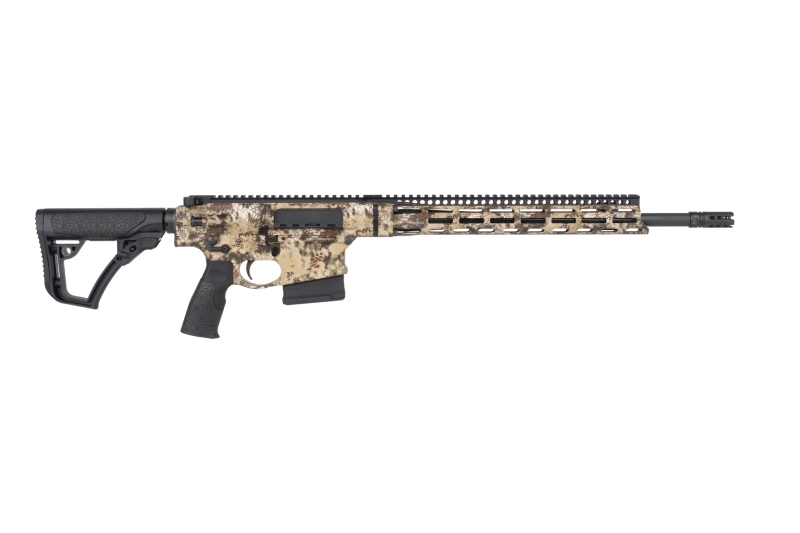AR-15 Versus AR-10 ? What’s the difference between AR-15 and 10? Which One is Best
Typically, if someone is talking about an “AR,” you likely assume they are referring to the AR-15 Rifle. Unbelievably, they could be talking about the AR-10! Which one is better? What are the main differences between the two? What are the differences in their upper receivers? Each version of the AR has pros and cons. The trick is finding what pros work best for you and what cons you are willing to put up with. Let us compare both versions of the AR and see which will work best for you and your needs.
The AR-15
Both rifles are terribly similar. So similar, in fact, that the AR-15 is often referred to as the downsized version of the AR-10. Not only is the rifle smaller, but so is the caliber, coming in at a 5.56mm. The magazine holds 20 to 30 rounds, and it is made of lightweight material (mylonite). It has a rotating bolt operation with a direct gas impingement. This allows the AR-15 to fire close to 800 rounds per minute with a muzzle velocity of about 3,000+ feet per second. The typical range is up to about 500 yards, although you can modify the weapon to help you successfully fire at more long-range targets.
When it comes to close combat situations, the AR-15 is mostly preferred, as it is smaller and easier to maneuver around small spaces. The AR-15 does not have much recoil, making it preferable, especially for those who are new to the world of AR shooting. Finally, the best part of the AR-15 is that it is more affordable and can be easily modified to meet your personal standards without breaking the bank.
The cons of the AR-15 are exceedingly rare but are specific. Both the AR-15 and AR-10 utilize the same reliable gas system, so there is a tie in that regard. Finally, while the AR-15 is lightweight and easier to handle.
While the cons can seem daunting, the AR-15 has many positives. The trick is figuring out what cons you can handle and what pros you prefer to be able to have in your weapon.
AR-10
The AR-10 has a standard magazine capacity of about 20 rounds but of course, larger mags are available. Like the AR-15, most of the weapon is made with alloy, making it lightweight. The barrel, bolt, and bolt carrier are all made of steel, while the buttstock, pistol grip, and handguard are made from glass reinforced plastic. The varied materials used make the weapon lighter than it would be otherwise and makes it easier to clean. This is a gas-operated weapon, meaning that the propellant gas bleeds into the port in the barrel. This type of operation quickly moves the BCG to allow the weapon to cock and re-cock, release the cartridge, and load a new round into the chamber. The direct gas impingement system gives the AR-10 a high cyclic rate of 700 rounds per minute, with a typical muzzle velocity of about 2,500 feet per second.
The AR-10 is often preferred because it is lightweight. Even though the magazine does not carry as much ammunition as the AR-15, the significant difference in weight from not carrying as much in the magazine makes it easier for you to carry extra ammunition without feeling bogged down. The bullet the AR-10 uses, the 7.62x51mm NATO, is significantly larger than that of the AR-15 and therefore carries more kinetic energy. This allows the bullet to have a larger impact on the target, creating more damage. This is particularly useful in combat situations. This is also useful in some competitions, as it has more knockdown power for when you are taking down targets.
A couple of more pros of the AR-10 are that it is a modular system, meaning it is easy and cost effective to change the caliber and cartridge. There is not much extra needed to do these modifications. Also, there is not a large amount of recoil coming from the AR-10. It may have a little more than that of the AR-15 simply because of its size, but it is not significant enough for you to be weary.
The cons of the AR-10 are just as few as the AR-15. The magazine does not hold as much ammunition, but you are able to compensate for this by carrying more. Since the AR-10 is made with more metal than the AR-15, it does weigh more overall. This can make it a challenge to carry more ammunition on your person, and it can make maneuvering in small quarters more difficult, especially during combat. Finally, the AR-10 is much more expensive than the AR-15. This can also be attributed to the extra metal that is used in manufacturing this weapon. While the metal may last longer, it is more heavy and more expensive, making the AR-10 a weapon that may be looked past depending on your needs and skill level.
Comparison Table
Here’s a comparison table between the AR-15 and the AR-10 rifles:
Feature | AR-15 | AR-10 |
Caliber | 5.56x45mm NATO / .223 Remington | 7.62x51mm NATO / .308 Winchester |
Cartridge Size | Smaller | Larger |
Weight | Lighter | Heavier |
Recoil | Lower | Higher |
Effective Range | Shorter | Longer |
Magazine Capacity | Higher | Lower |
Cost | Lower | Higher |
AR-15 Versus AR-10
Here’s a more detailed explanation of each point:
- Caliber: The AR-15 uses a 5.56x45mm NATO or .223 Remington cartridge, while the AR-10 uses a 7.62x51mm NATO or .308 Winchester cartridge. The larger caliber of the AR-10 means that it is able to fire a heavier bullet, which can travel further and hit harder than the lighter bullet fired by the AR-15.
- Cartridge Size: As a result of the difference in caliber, the AR-15 cartridge is smaller than the AR-10 cartridge. This makes the AR-15 easier to handle, as it is lighter and more compact.
- Weight: Because the AR-10 uses a larger caliber cartridge and a heavier receiver, it is heavier than the AR-15. This can make it more difficult to carry, especially for extended periods of time.
- Recoil: The larger caliber and heavier weight of the AR-10 result in a higher recoil when compared to the AR-15. This can make it more difficult to control, especially for inexperienced or smaller shooters.
- Effective Range: Due to the heavier bullet and greater velocity of the AR-10, it has a longer effective range than the AR-15. This makes it better suited for long-range shooting, such as hunting or target shooting.
- Magazine Capacity: The AR-15 uses smaller magazines than the AR-10, which typically have a higher capacity. This can give the AR-15 a tactical advantage in close-quarters combat, where reloading is more frequent.
- Cost: The AR-10 is generally more expensive than the AR-15, due to the cost of the larger caliber cartridge, heavier receiver, and longer barrel. This can make it more difficult for some individuals to afford, especially when purchasing multiple rifles.
Note: It’s important to remember that both the AR-15 and the AR-10 have their own unique advantages and disadvantages, and the right choice depends on the specific needs and preferences of the individual shooter.
Both rifles are powerful and useful in combat or hunting. The AR-15 is most preferred in long-distance shooting like that of hunting. If you are hunting large prey, though, the firing power of the AR-10 will be more useful, even though the compactness and lightweight construction of the AR-15 creates more accuracy. In some situations, brute strength is needed more than perfection in aim. Both rifles have a decent range as far as price, but the AR-15 is typically going to be more affordable. The AR-10 ranges from $900 to $8,000, whereas the AR-15 ranges from $500 to $3,000. The ranges vary so much because there are endless combinations of modifications you can make to each rifle.
Bottom Line
To decide what rifle works best for you and your needs, you will want to consider the pros and cons of each. If you can, test out each type of rifle before you make your final decision. No matter what you choose, you will have a quality weapon at your disposal.









